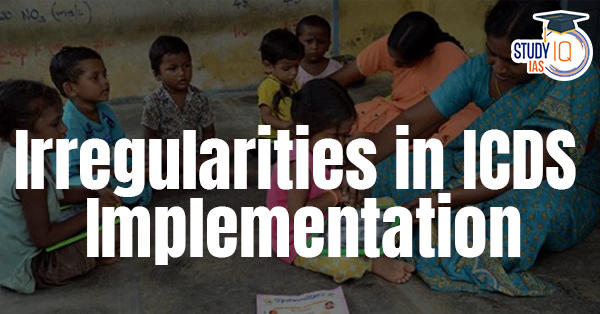Table of Contents
What is Integrated Child Development Scheme (ICDS)?
About:
- The Umbrella Integrated Child Development Scheme, launched in 1975, is a centrally sponsored scheme. It is implemented by the Ministry of Women and Child Development.
Objectives:
- Integrated Child Development Scheme improve the nutritional and health status of children in the age-group 0-6 years;
- Integrated Child Development Scheme lay the foundation for proper psychological, physical and social development of the child;
- Integrated Child Development Scheme reduce the incidence of mortality, morbidity, malnutrition and school dropout;
- To achieve effective co-ordination of policy and implementation amongst the various departments to promote child development; and
- To enhance the capability of the mother to look after the normal health and nutritional needs of the child through proper nutrition and health education

Schemes Under Integrated Child Development Scheme:
1) Anganwadi Services Scheme:
- Objective: Early childhood care and development.
- Beneficiaries: Children in the age group of 0-6 years, pregnant women and lactating mothers.
- Components:
- It provides a package of six services namely supplementary nutrition, pre-school non-formal education, nutrition & health education, immunisation, health check-up and referral services.
- Supplementary Nutrition includes Take Home Ration (THR), Hot Cooked Meal and morning snacks to improve nutritional outcomes in children.
- As part of THR, raw ingredients or pre-cooked packets are distributed to beneficiaries — children between eight months and three years, pregnant and lactating mothers and Out-of-school Adolescent Girls (OOSAG).
2) Pradhan Mantri Matru Vandana Yojana:
- This scheme provides cash incentive of Rs.5,000/- in three instalments directly to the Bank/Post Office Account of Pregnant Women and Lactating Mother (PW&LM) in DBT (Direct Benefit Transfer) Mode.
3) National Creche Scheme:
- This scheme provides day care facilities to children of age group of 6 months to 6 years of working women.
- Children are provided with supplementary nutrition, early childcare education, and health and sleeping facilities.
4) Scheme for Adolescent Girls:
- This scheme aims to contribute to the improvement and well-being of children in difficult circumstances, as well as, reduction of vulnerabilities to situations and actions that lead to abuse, neglect, exploitation, abandonment and separation of children from parents.
5) Child Protection Scheme:
- This scheme aims at out of school girls in the age group 11-14, to empower and improve their social status through nutrition, life skills and home skills.
6) POSHAN Abhiyaan:
- This initiative targets to reduce the level of stunting, under-nutrition, anaemia and low birth weight babies by reducing mal-nutrition/undernutrition, anaemia among young children as also, focus on adolescent girls, pregnant women and lactating mothers

Highlights Integrated Child Development Scheme Report
- Siphoning of funds: In 2020-21, under the Take Home Ration (THR) component of Integrated Child Development Scheme, ration worth Rs 110.83 crore was distributed to fake beneficiaries.
- Inflated beneficiaries:
- According to the Integrated Child Development Scheme Report, only three adolescent girls were found to be registered across 49 anganwadi centers in eight districts, as opposed to the state’s MIS portal, where 63,748 girls were registered, of whom ration was ostensibly distributed to 29,104 adolescent girls.
- According to the Women and Child Development department of Madhya Pradesh, there were 36.8 lakh Out-of-school Adolescent Girls (OOSAGs) in the state in 2018-19. However the report estimated only 9,000 OOSAGs in for 2018-19.
- Fake production of THR: As per Integrated Child Development Scheme Report, the fake production of THR can be pegged at Rs 58 crore, despite non-availability of stock at the time challan was issued.
- Trucks on Paper: The Integrated Child Development Scheme Report found that about 1,125.64 metric tonnes of THR costing Rs 6.94 crores was distributed through trucks. But during verification of the registered vehicles, it was found that these trucks were registered as motorcycles, cars, autos and tankers. In some cases, the purported trucks did not exist in the database.
Way Forward
- To minimize ‘alarming’ irregularities in the Integrated Child Development Scheme, in 2015, the government has introduced a five-tier monitoring and review mechanism at national, state, district, block and Anganwadi levels.
- Involving communities in the implementation and monitoring of Integrated Child Development Scheme can be used to mobilize additional resources the anganwadi centers, improve quality of service delivery and increase accountability in the system.
- Integrated Child Development Scheme monitoring and evaluation activities need strengthening through the collection of timely, relevant, accessible, high-quality information to inform decision, improve performance quality and increase accountability.





















 WhatsApp
WhatsApp